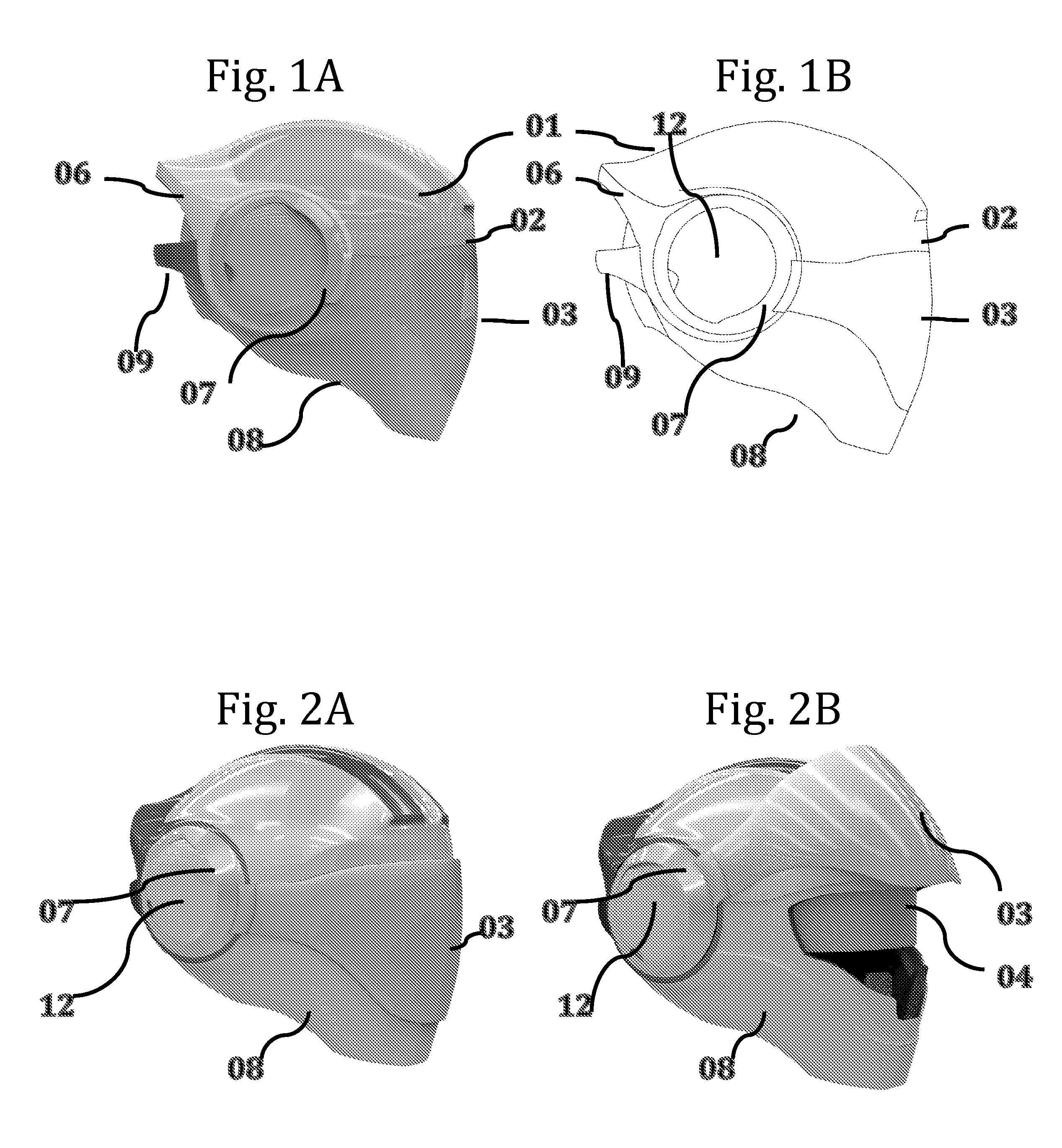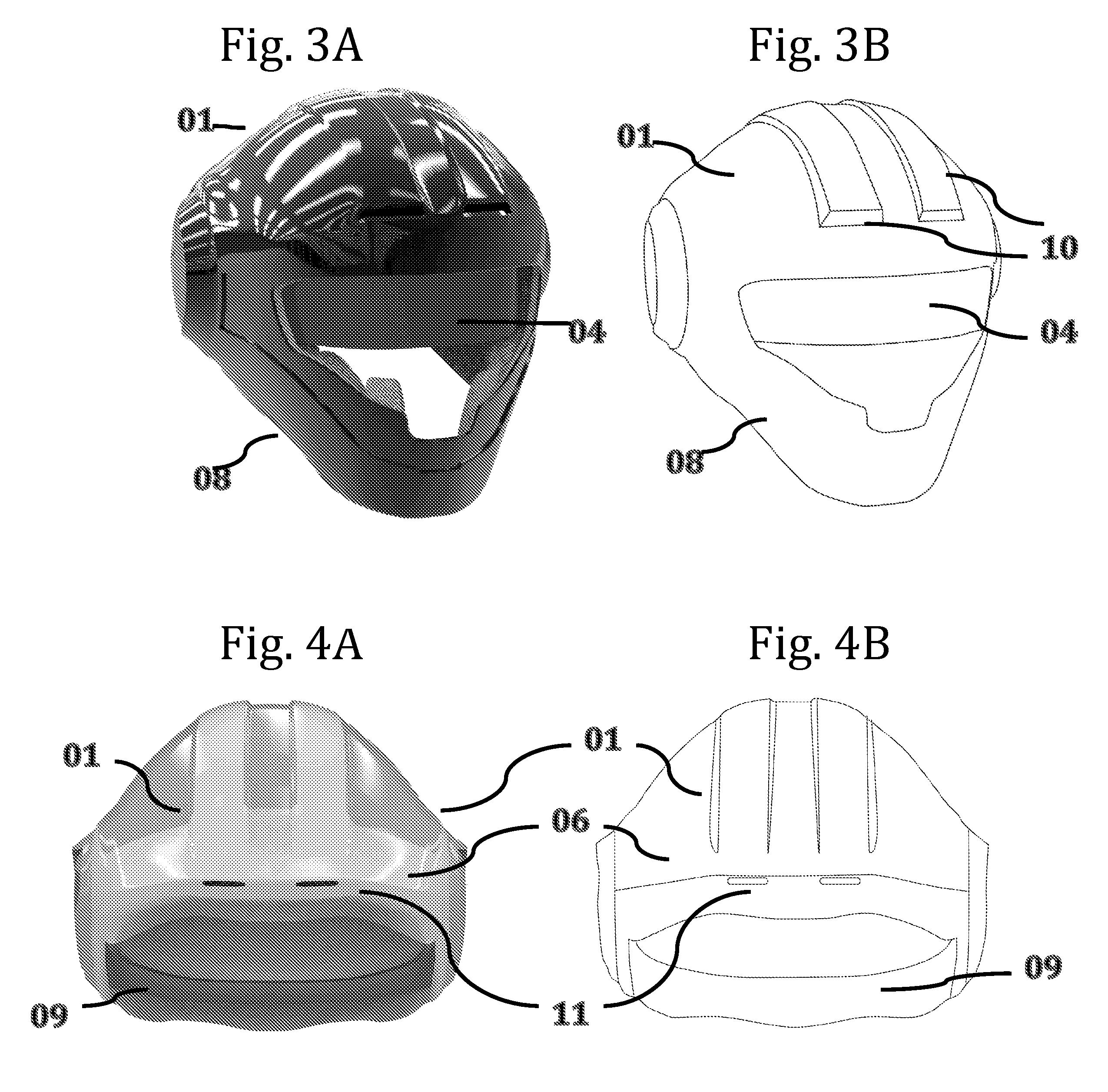Form And Function Helmet
a helmet and function technology, applied in the field of protection headgear, can solve the problems of unfitness, unbalanced and “unnatural” anthropometric shape, and already “top-heavy” helmets, and achieve the effects of “stabilizing/grabing bars”, aesthetics and functional, and easy helmet transportation
- Summary
- Abstract
- Description
- Claims
- Application Information
AI Technical Summary
Benefits of technology
Problems solved by technology
Method used
Image
Examples
Embodiment Construction
[0032]Referring now to the drawings wherein like or corresponding reference numerals are used for like or corresponding parts throughout the several views. The present invention incorporates a shell 1, herein referred to as “shell”, This shell firmly coupled with numerous components on its surface herein referred to as “components” No's 2, 3, 4, 5, 6, 7, 8, 9, 10, 11, and 12, herein referred to as “components.” Said assembly herein collectively referred to as “helmet.” The helmet may be manufactured in separate parts and processes then integrated during final assembly.
[0033]In a preferred embodiment a strong yet flexible helmet shell 1 would be the first main part. This part is thus contoured and designed to comply with certain comfort and aerodynamic parameters for optimal wearer comfort.
[0034]In a preferred embodiment the outermost layer or “shell”1 can be made up of a strong yet flexible construction preferably of fiber-reinforced composites or thermoplastics or the like with the...
PUM
 Login to View More
Login to View More Abstract
Description
Claims
Application Information
 Login to View More
Login to View More - R&D
- Intellectual Property
- Life Sciences
- Materials
- Tech Scout
- Unparalleled Data Quality
- Higher Quality Content
- 60% Fewer Hallucinations
Browse by: Latest US Patents, China's latest patents, Technical Efficacy Thesaurus, Application Domain, Technology Topic, Popular Technical Reports.
© 2025 PatSnap. All rights reserved.Legal|Privacy policy|Modern Slavery Act Transparency Statement|Sitemap|About US| Contact US: help@patsnap.com



